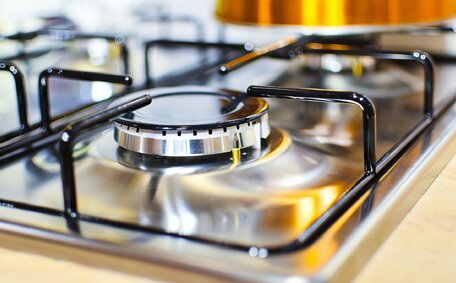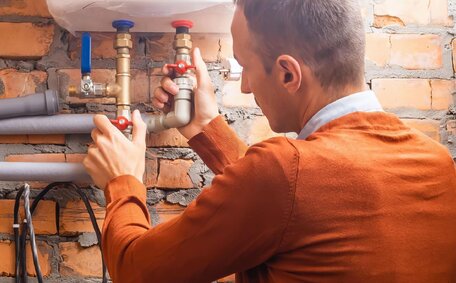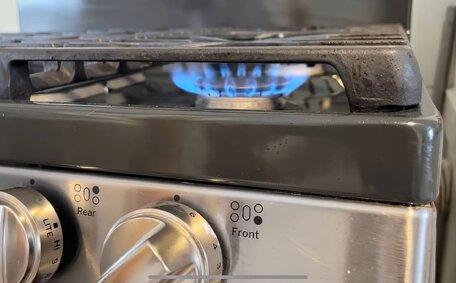Introduction to Gas Fitting in Kitchen Renovations
Incorporating gas fitting services is essential for functionality and safety when renovating your kitchen. Expert licensed gas fitters are required to install and connect gas appliances such as cooktops, ovens, and hot water systems, ensuring they function correctly. At Mascot Plumbing, your gasfitter and our qualified team handle complete gas system integration for kitchen upgrades in Mascot, Sydney.
Our experts handle all gas required compliance paperwork and certifications to sign off on new gas system additions.
This process includes the installation of critical safety systems such as gas shut-off valves.
Our licenced gas fitters follow the latest standards, employing quality materials and techniques to ensure a secure, durable, and leak-free gas connection for your household kitchen.
Moreover, gas fittings are required to adhere to stringent safety codes. We also perform gas leak detection, repairs, and general maintenance. Upgrading your kitchen gas network enhances cooking, heating efficiency, and the performance of your gas appliances and water system.
Benefits of Using Gas Appliances
Gas hot appliances provide significant advantages over electric options for kitchen renovations:
- Lower running costs - gas is generally more cost-effective per unit of energy than electricity.
- Faster heating - gas cooktops and ovens enable more rapid heating, which is ideal for busy kitchens.
- Higher efficiencies - modern gas appliances convert over 90% of gas to usable heat.
- Indoor air quality - gas combustion produces less indoor air pollution.
- Reliability - gas supplies are less prone to blackouts/disconnections.
Our Mascot Plumbing team offers advice on the ideal gas appliances and configurations tailored to your kitchen design and lifestyle needs.
The Role of a Licensed Gas Fitter
Trained and licensed gas fitters undergo extensive certification to manage gas systems safely. In Australia, a gas fitter must complete the Certificate IV in Gas Supply Industry Operations (UEG40118) at a minimum. Their key responsibilities during kitchen renovations include:
- Decommissioning old gas appliances and infrastructure.
- Designing and ensuring the correct installation gas pipe networks.
- Connecting your new gas cooktops, ovens, hot water systems etc.
- Testing for any gas leak your network may have using dedicated detection equipment.
- Ensuring compliance with gas fitting regulations and standards.
- Issuing compliance certificates upon completion.
Installing and repairing gas systems demands precision, care, and diligence to ensure safety. Attempting DIY gas fitting risks complications, and without professional expertise to set up your gas system, you may face gas leaks, fires, explosions and exposure to toxic fumes. Our Mascot Plumbing licenced gas fitters methodically work gas appliances into your home’s systems and renovated kitchen spaces, maintaining the highest safety and workmanship standards.
Gas Installation Process During Kitchen Renovations
Licensed gas fitters adhere to a meticulous, safety-focused process when installing new gas appliances and infrastructure during kitchen renovations:
- The gas fitter first ensures the main gas line is isolated and verifies that all appliances are off.
- Old gas pipes and appliances are removed as required by the renovation plans.
- New gas lines are designed and installed to supply the relocated/new gas appliances.
- Purging procedures remove air and impurities from pipework before reconnecting gas supply.
- Gas pressures are measured using manometers, and joint integrity is checked for leaks with detection fluids.
- New cooktops, ovens, hot water systems are positioned and securely fitted in place.
- Appliances are attached to the new gas network and exhaust systems.
- Multiple full safety checks are conducted to confirm compliance before sign-off.
- Updates to safety certificates are completed, with copies provided to homeowners.
Throughout kitchen renovations, our gas fitters at Mascot Plumbing prioritise safety by adhering to gas fitting regulations. We ensure your home’s new gas system and appliances operate reliably when comes the time to enjoy your kitchen innovations for years.
Maintaining Safety and Compliance
Strict laws and standards govern any work with gas in Australia to ensure safety. Licenced gas fitters like those from Mascot Plumbing are fully trained in these regulations and dutifully adhere to them when undertaking kitchen renovations.
Key gas safety practises followed by our gas fitters include:
- Checking for gas leaks - Gas detectors are used to identify any issue within the network, ensuring all connections and gas pipes are secure.
- Servicing appliances that are gas-related by trained licensed professionals can prevent wear and tear that can lead to dangerous faults if not addressed.
- Updating compliance certificates - Required safety paperwork must remain current.
- Installing adequate ventilation - Gas appliances need proper air flow to operate safely.
- Advising on regulator maintenance - Regulators control gas pressure levels entering homes.
- Validating safety controls - Buttons, valves and switches are tested regularly.
Neglecting gas safety compliance risks serious dangers like explosions, fires, gas leaks and carbon monoxide poisoning. Our licenced professionals are committed to the highest safety and workmanship standards when installing or maintaining gas systems.
Contact Mascot Plumbing for regular gas safety inspections and to understand your gas system, maintaining the excellent standards set by our professional gasfitters. Let our gas specialists ensure your newly renovated kitchen’s gas network operates reliably and in strict accordance with Australian standards.
Choosing Gas Fixtures and Appliances
When selecting gas fixtures and appliances for your kitchen renovation, consider the following:
Types of Gas Appliances
- Cooktops - Choices include gas cooktops with multiple burners, wok burners, grillers and teppanyaki plates.
- Ovens - Look for fan forced or conventional gas ovens with desired capacity and functions.
- Rangehoods - Why should you size rangehoods? It’s to match the cooktop width and CFM rating for optimal ventilation needs.
- Hot water system - Select continuous flow or storage tank models fitting available space.
Efficiency Ratings
Check energy rating labels when comparing gas appliances for efficiency. Higher star ratings indicate better energy and gas usage. Aim for appliances with a minimum of 3-star energy ratings.
Integrated Design
Consider the visual integration of gas appliances with your cabinetry and benchtop materials for a cohesive aesthetic. Stainless steel commonly provides adaptable styling.
For expert assistance in selecting the ideal gas appliances and fixtures for your kitchen renovation, consult our team at Mascot Plumbing. We provide solutions customised to your family’s lifestyle requirements and design preferences.






